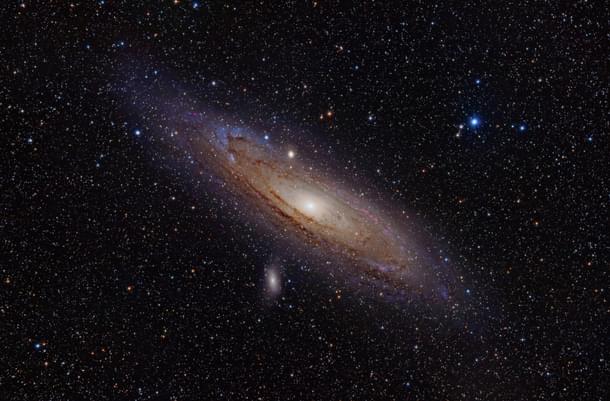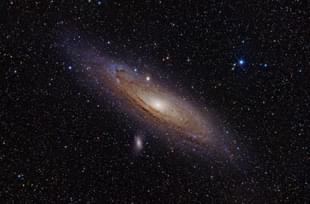Blogs
The Little And The Large
V.S. Ravi
Dec 19, 2023, 01:32 AM | Updated 01:32 AM IST
Save & read from anywhere!
Bookmark stories for easy access on any device or the Swarajya app.


‘Little things mean a lot’ is the title of a famous, popular song by Kitty Elllen which I have quoted below. The lyrics are simple but they carry a powerful message.
Blow me a kiss across the room
It Say I look nice when I’m
Touch my hair as you pass my chair
Little things mean a lot"
Give me your arm as we cross the street
Call me at six on the dot
A line a day when you’re far away
Little things mean a lot.
The British Physicist Paul Dirac stumbled upon an errant minus sign in an equation, which led him to postulate the existence of antimatter. Oersted happened to notice an unexpected deflection of a current-carrying wire as it moved through a magnetic field, during a demonstration in a class room. This resulted in the discovery of the electric motor.
Astronomers found Neptune when they tried to account for a small irregularity in the orbit of its neighbour Uranus. The deflection of starlight passing near the sun by a mere 1.75 seconds of arc (less than a thirtieth of a degree), led to the first proof of Einstein's theory of general relativity.
Slight wobbles in the positions of parent stars led to the discovery of the first planets orbiting distant stars. A rare streak of light in a 12.5-million-gallon water tank lined with photomultiplier tubes more than 3,250 feet beneath Japanese Alps turned out to be the mass of a particle known as the neutrino. The little neutrino may well turn out to be making up much of the mass of the illimitable Universe.
Quite obviously since little differences make a large difference in nature, little differences make a large differences in scientific understanding .
Consider a single extra electron in an atom's outer shell. It spells the difference between sodium, one of the most chemically active metal, and neon a chemically inert gas. Same is the case with Plutonium 238, good for powering spacecraft but extremely hazardous to human health.
An extra neutron turns it into plutonium-239, used for making bombs. Plutonium-239 splits easily setting of chain reactions. Plutonium-238 does not split so easily but spits out radiation at an enormous rate; it can be a death sentence, if it lodges in someone's lungs
There are many other examples. A minute change in the wavelength of light turns blue to violet, and allows violet but not ultraviolet to pass through glass.
If the" electric force were a little stronger and strong force were a little weaker, atoms, and therefore matter as we know it, would probably not exist. Sometime near the earliest moments of the universe, an imbalance of antimatter and matter must have led to the existence of matter. According to physicists, particles of matter and antimatter annihilate in a burst of energy when they meet; if the universe had been created with equal parts of both, then pairs of particles and antiparticles would have annihilated long ago, leaving nothing but radiation. (Living things are even more profoundly affected by small differences).
Let us consider another scenario. If the orbit of the earth were a little closer to the sun, organic molecules could not have stuck together, as the temperatures would have been too hot. If on the other hand, the orbit had been a little farther from the sun, opportunities for life would have been frozen into immobility by extremely cold temperatures. A difference between brown eyes and blue, between sickness and health, between extinction and survival of a species could have resulted from a tiny alteration of the DNA. Similarly a difference of three atoms out of more than 5 million could mean the difference between a mild virus and a killer.
Only one atom constitutes the difference of lifeblood between plants and people. Chlorophyll is made up of 136 atoms of hydrogen, Oxygen, carbon and nitrogen arranged in a ring around a single atom of magnesium; haemoglobin (blood) is made up of 136 atoms of hydrogen, carbon, oxygen and nitrogen arranged in a ring around a single atom of iron. How could iron or Magnesium make such a radical difference! The genetic difference between humans and the great apes is less than 1per cent.
The difference between an amateur flautist and Lalgudi Jayaraman might not even be noticeable to the eye. But it would be huge to the ear. The same is true of the "last millisecond of time" that turns an Olympic runner into an Usain Bolt . Or of the actual imperceptible turn of phrase that gives unrivalled power and embellishment to a Shakespearean sonnet as compared with the sonnet of any other poet, or the embellishments of style, footwork, and grace that turn a fairly good dancer into Fred Astaire. The difference between 98.6 degrees F and 106 degrees F is both small and potentially lethal.
Sometimes, when things are connected like rows of dominoes little differences usually assume big proportions. A rock doesn't start a landslide unless a whole mountain of rocks is somewhat shaky and ready to fall. When it is, the first rock acts like a trigger, setting off a gun that is already loaded and cocked. Examples of such a trigger are:
A) a cancerous growth set off by a combination of genes
B) the push on the first domino that knocks down the row
c) The ice crystals that set off a chain of events that culminates in a hurricane
It is not always possible to know which things are connected and how. This is the reason why earth quake prediction for example is so difficult. Seismologists have yet to discover exactly which of the myriad stresses and strains near a fault will cause two plates of the earth's crust locked together by friction for years to lurch apart in an earthquake. Even in respect of human psychology no psychiatric or even a scientist can predict which combinations of small events will trigger off a murder or a suicide.
There are however some little differences which are connected in such a way that the results are literally explosive. Thus for example, if one domino in a row is knocked down, the chain of dominoes passes along the effect and at the end of the line you have one knocked-down domino (with a line of other knocked down dominoes in between).
But suppose you have a series of dominoes set up in such a way that the first domino knocks down two dominoes, and those two knock down four and those four knock down eight and so on. Then you have what is known as a "nonlinear sequence of events". At the end of the chain, that single domino may topple hundreds of dominoes. The effect is not commensurate with the cause, any more than anger at rudeness on the road is commensurate with murder. What you have in effect is an explosion.
Just suppose you multiply something by a small number such as 2 it leads to everything from epidemics to the nuclear fusion that powers the sun. Doubling once or twice or even three times doesn't necessarily make a big difference. But if you double anything, no matter how small, enough times (even a relatively small number of times) you always end up with a huge amount. Because doublings are connected like dominoes, each additional doubling is connected to all the doublings before. For this reason doubling the thickness of tissue paper just fifty times adds up to enough mileage to the moon and back seventeen times-extremely difficult to imagine.
Most people don't notice differences when the department store charge account adds 1.5 percent interest to their balance each month and it is hard to get excited when you read that the world population is increasing at a rate of 1.8 percent. The differences themselves seem very little. It's the connections between the differences that make them add up- and it's the total pattern that we can't perceive.
In an entirely different context, the effect of little differences can explain why imperceptible racial or gender bias - bias that no one can quite put a finger on - can lead to widespread discrimination.
The difference between Newton's laws and Einstein's laws are very small - all but imperceptible for that matter, except at speeds close to the velocity of light. No one notices that time slows down on a trip across the country. No passenger notices that everyone in an aircraft gets slightly massive during the flight. You could never notice the difference between gravity as a Newtonian force and as an Einsteinian curvature of space. Yet the significance of those little differences is enormous.
As Richard Feynman pointed out Einstein's laws make Newton's laws only a little bit wrong but "philosophically we are completely wrong" with Newton's laws. "This is a very peculiar thing about the philosophy or the ideas behind the laws. Even a very small effect sometimes requires profound changes in our ideas"
In the end it was the little differences that Darwin noticed in species of turtles and birds and iguanas, that led him down the path towards his evolutionary theory in the first place: the island by island variations in shell and beak and colour.
Even today the confidence in evolution is continually bolstered by such small irregularities as Stephen Jay Gould's "panda's thumb"- a thumb that is really an appendage rigged out of an overgrown wrist-bone. Nearly perfect design is not good for evolution Gould argues , because it would more likely be the handiwork of a nearly perfect creator. Rather he says "odd arrangements and funny solutions are the proof of evolution—paths that a sensible God would never tread but that a natural process constrained by history follows perforce".
Most of the time little differences really are little differences. Once you have understood you can relax about them.The occasional odd signal can serve as a chink in the armour of of our complacency—a glitch in the works that jars us out of our accustomed ways of looking at things.
Large differences when you think about it are much more difficult to notice. You don't notice the motion of the earth even though it is spinning around its centre at 1,000 miles per hour and around the sun at 20 miles per second. You don't notice the flow of your own blood or the activities of your own cells. Major social and economic trends often pass us invisibly because they build up slowly. You can't feel the speed of your 787 aircraft, even when it is whizzing along at 500 miles per hour.
Sometimes you need to hit an air pocket before you know that you are flying. You cannot feel the Earth move. Perhaps the biggest thing that little differences can do is to open our eyes to the presence of larger, unexpected truths!
V.S.Ravi is a distinguished and highly decorated IPS officer having served both the Government of AP and the Government of India, for 35 years. He retired in 1998. He is a scion of the Alladi family, being a grandson of the Late Sir Alladi Krishnaswamy Iyer, one of the Chief architects of the Constitution . Sri Ravi is one of the foremost authorities on Shakespeare in the country. He has contributed articles on Shakespeare to the Hindu and News Time Now. He passed Physics (Hons) with distinction and he has kept himself in touch with the latest developments in science and technology.





